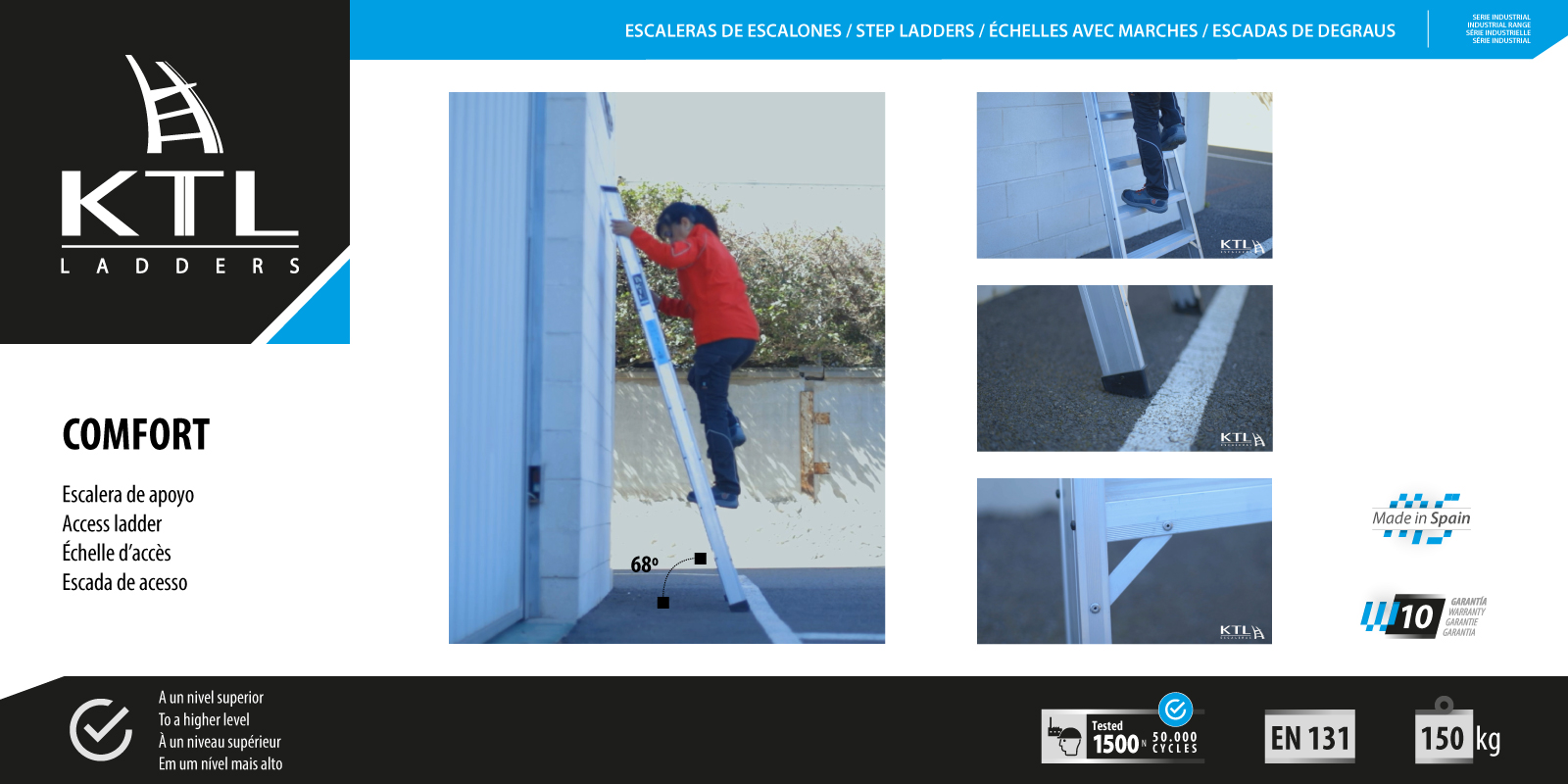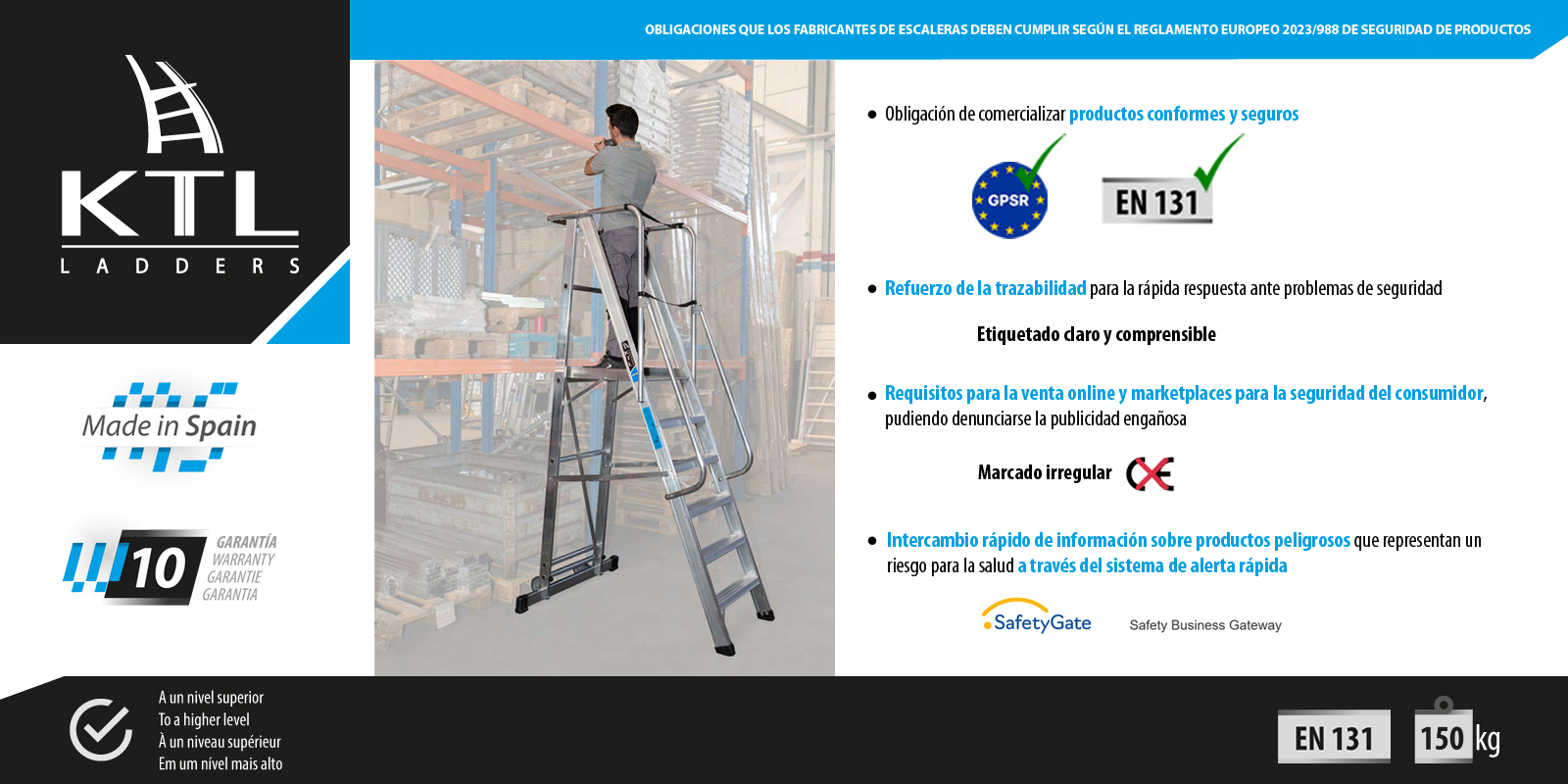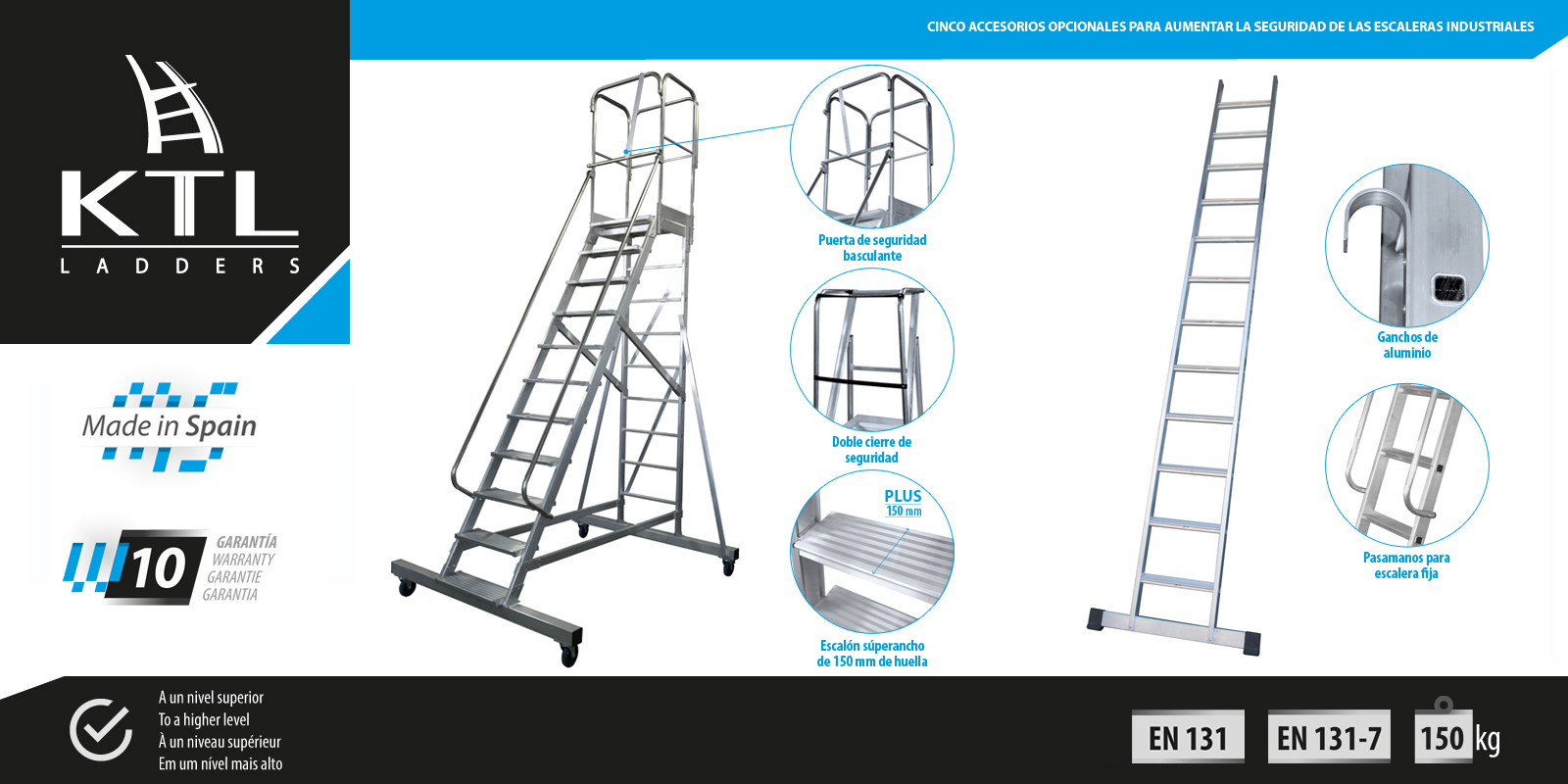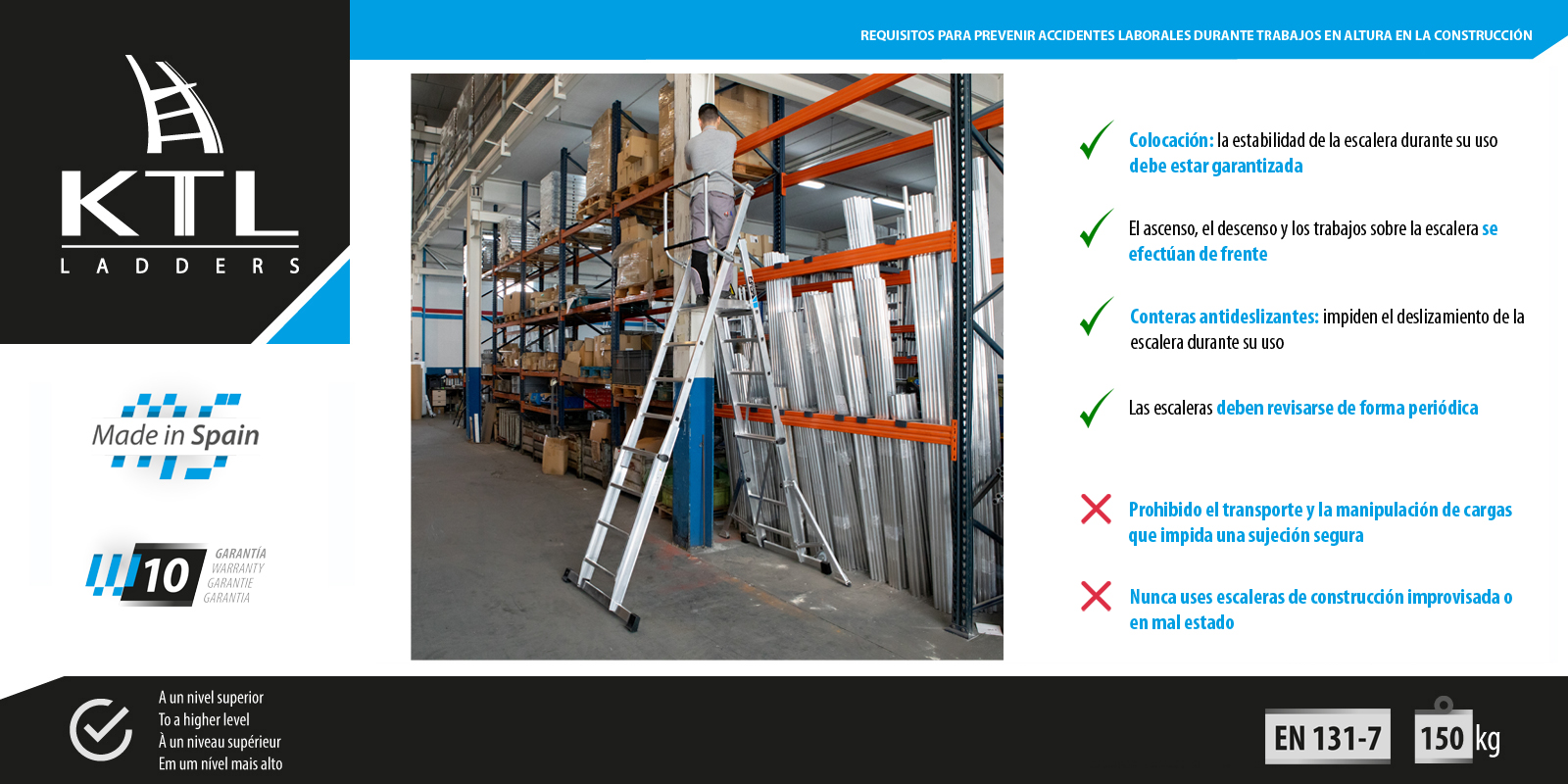The professional ladder has become an indispensable tool in many professions. For this reason, it’s common to see workers using an aluminium ladder to perform their tasks more easily. Despite the efforts of the National Institute for Occupational Safety and Health (INSST) and the occupational risk prevention departments within companies to ensure safe working practices, a significant number of accidents still occur in work-at-height scenarios.
Often, these incidents could be avoided through careful construction, maintenance, and proper use of the ladder by workers. Accelerated work rhythms aimed at reducing time and increasing profitability can lead to problems. For this reason, workers play a crucial role in using the aluminium professional ladder and ensuring workplace safety.
Occupational risks of the professional ladder
When starting the workday, the worker must adhere to certain measures and comply with the safety regulations for using the aluminium professional ladder. The potential accidents associated with ladder use are varied, and preventing them largely falls on the worker, as it is their responsibility to ensure their own safety and health at work.
However, what are the hazards faced by someone working at height?
- Top of the ladder shifting: The aluminium professional ladder might not be properly secured to the surface, or it may have moved accidentally during ascent
- Sliding of ladder supports: This can occur due to wear and tear or the absence of anti-slip feet, or if the ladder is placed on uneven, unstable, slippery, or inclined surfaces
- Loss of stability: Incorrect positioning of the professional ladder, such as an improper angle on extension ladders or incomplete opening on stepladders
- Imbalance: Climbing with heavy loads or leaning sideways to perform tasks can cause instability
- Breakage: Any part of the ladder or a rung may break due to wear and tear or improper use
- Slips: Caused by improper footwear or the presence of liquids on the rungs
- Climbing backwards or without control: Ascending and descending should always be done facing the ladder
- Electric shock: Be cautious of touching any electrical connections. Avoid leaning the ladder against an electrical panel or placing it in areas with electrical hazards
If you use an aluminium professional ladder as a work tool, it’s essential to know its safety regulations to use it correctly and perform tasks in the best possible manner.




